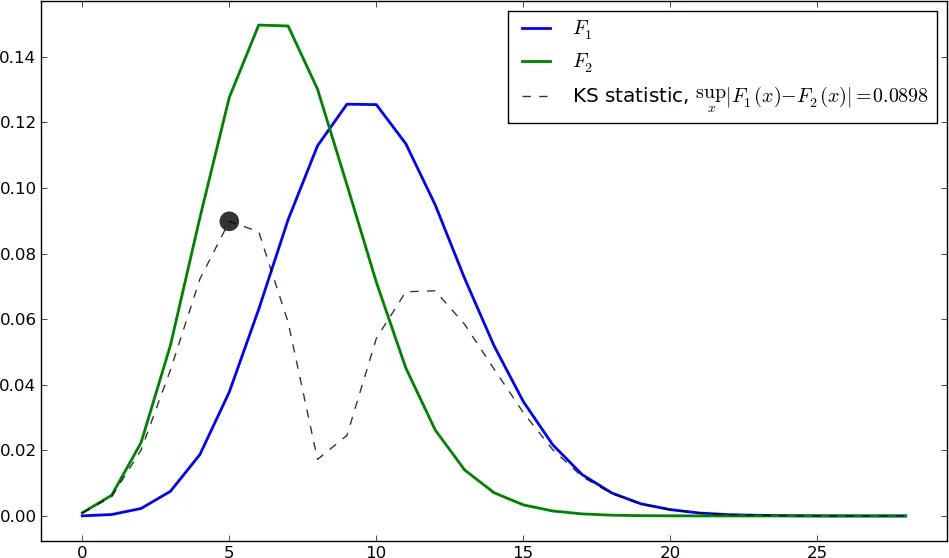作为一个简单的样例,这个样本数据应该给出任何这种测试的高p值。
import random
nopoints = 100
max = 1000
points = sorted([random.randint(0,max) for j in xrange(nopoints)])
如何为此问题制定一个明智的测试?
从www.stat.wmich.edu/wang/667/classnotes/pp/pp.pdf中我看到:
"注6.3(测试泊松分布)上述定理也可用于检验给定计数过程是否为泊松过程。这可以通过观察在固定时间t内的过程来完成。如果在此时间段内我们观察到n次事件,并且该过程是泊松的,则无序发生时间将独立且均匀地分布在(0,t]上。因此,我们可以通过测试n个发生时间是否来自均匀(0,t]总体来测试该过程是否为泊松过程。这可以通过标准统计程序(例如Kolmogorov-Smirov测试)来完成。"


kstest的 p 值假定它是一个没有估计参数的连续分布,如果在你的问题中不是这种情况,那么 p 值将不正确。(这也适用于 Hooked 的答案) - Josefkstest并以均匀分布作为空假设分布。如果您有离散事件或事件时间,则可以使用卡方分布。在statsmodels邮件列表上刚刚有相同的问题,涉及到泊松过程同质性的其他测试(例如将其分成时间间隔进行分组),但我没有任何可供使用的测试。 - Josef